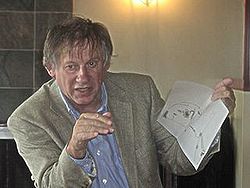What are design patterns?
“A design pattern in architecture and computer science is a formal way of documenting a solution to a design problem in a particular field of expertise. The idea was introduced by the architect Christopher Alexander in the field of architecture and has been adapted for various other disciplines, including computer science. An organized collection of design patterns that relate to a particular field is called a pattern language.”
What are game design patterns? A similar language of design principles which game designers can use to think about and express their work.
Game Design Patterns by Staffan Björk, Sus Lundgren, Jussi Holopainen:
ABSTRACT
We present a model to support the design, analysis, and comparison of games through the use of game design patterns, descriptions of reoccurring interaction relevant to game play. The model consists of a structural framework to describe the components of games, and patterns of interaction that describes how components are used by players (or a computer) to affect various aspects of the game play. Focusing on the patterns and identified methods for using them, we describe the development of the model and how we are currently working to enlarge and validate the collection of patterns.Keywords
Game Design, Patterns, Taxonomies, Game Models
To me, a pattern is a short name for a definition of “how you do something.”
The “something” can be very specific — example, the “Spawnpoint Pattern” makes the player spawn at a particular place in the game (with variations for randomness, delay time, etc.)
Or the something can be very general — the “Player Happiness Pattern” discusses player psychology and game goals.
I’m inventing freely here for purposes of example — “Spawnpoint Pattern” and “Player Happiness Pattern” may be useful to you or not.
Patterns can be as arbitrary as you need them to be — I could speak of the “Handy Vandal Pattern” if I found it useful.
As it happens, “Handy Vandal” doesn’t impress me as a useful pattern, although the fact that it doesn’t impress me as a pattern does imply something about useful patterns.
Good patterns are good because they reflect the deep inner nature of the subject matter.
The pattern is a reflection, a double. Think of pattern in the sense of graphic design, as an image that repeats itself. Now think of the world itself — creation, reality — as the first image, and the game design pattern as a symbolic repetition of the world.
The proper subject matter of game design comprises patterns such as: “game rules” … “player” … “game start” … “game score” … “competition” … “cooperation” … or any other short descriptive phrase that you found useful as a category of information. The pattern name is shorthand for a big topic: the name encapsulates the many complex details of the big topic, giving you a way to talk about high-level patterns without spelling out the details; meanwhile, the details are in there, memorable because of their place in the pattern, ready to be conveniently referenced when needed.

Last word goes to the Patriarch of design patterns:
“The elements of this language are entities called patterns. Each pattern describes a problem that occurs over and over again in our environment, and then describes the core of the solution to that problem, in such a way that you can use this solution a million times over, without ever doing it the same way twice.”